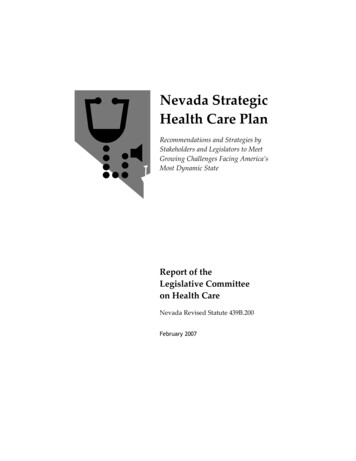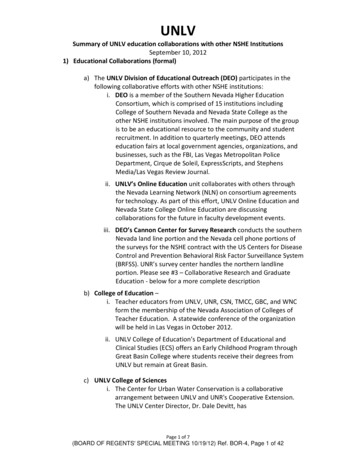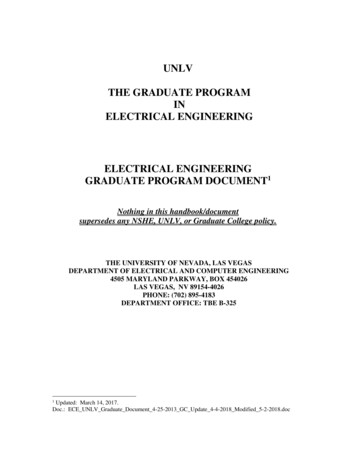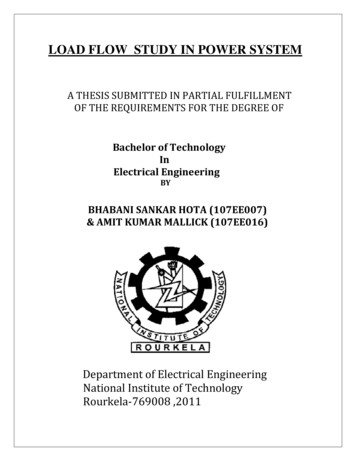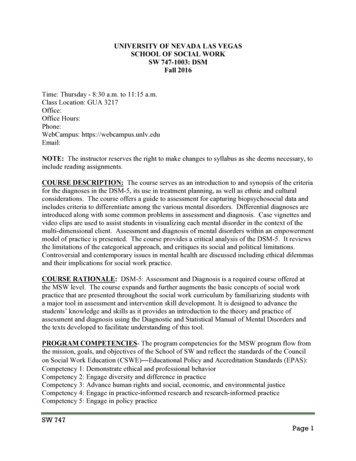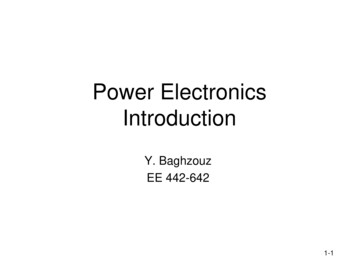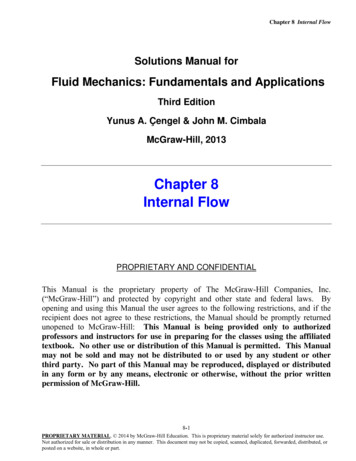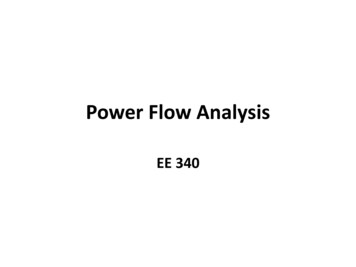
Transcription
Power Flow AnalysisEE 340
Introduction A power flow study (load-flow study) is a steady-stateanalysis whose target is to determine the voltages,currents, and real and reactive power flows in a systemunder a given load conditions. The purpose of power flow studies is to plan ahead andaccount for various hypothetical situations. For example, ifa transmission line is be taken off line for maintenance, canthe remaining lines in the system handle the required loadswithout exceeding their rated values.
Power-flow analysis equationsThe basic equation for power-flow analysis is derived fromthe nodal analysis equations for the power system: Forexample, for a 4-bus system, Y11 Y12 Y 21 Y22 Y31 Y32 Y41 Y42Y13Y23Y33Y43Y14 V1 I1 Y24 V2 I 2 Y34 V3 I 3 Y44 V4 I 4 where Yij are the elements of the bus admittance matrix, Vi arethe bus voltages, and Ii are the currents injected at each node.The node equation at bus i can be written asnI i YijV jj 1
Power-flow analysis equationsRelationship between per-unit real and reactive powersupplied to the system at bus i and the per-unit currentinjected into the system at that bus:Si Vi I i* Pi jQiwhere Vi is the per-unit voltage at the bus; Ii* - complexconjugate of the per-unit current injected at the bus; Pi and Qiare per-unit real and reactive powers. Therefore,I i* ( Pi jQi ) / Vi Pi jQi Vi* I i ( Pi jQi ) / Vi *nnj 1j 1*YV YVV ij j ij j i
Power flow equationsLetYij Yij ijand Vi Vi inThenPi jQi Yij V j Vi ( ij j i )j 1nHence,Pi Yij V j Vi cos( ij j i )j 1nandQi Yij V j Vi sin( ij j i )j 1
Formulation of power-flow study There are 4 variables that are associated with each bus:o P,o Q,o V,o δ. Meanwhile, there are two power flow equations associatedwith each bus. In a power flow study, two of the four variables are definedan the other two are unknown. That way, we have thesame number of equations as the number of unknown. The known and unknown variables depend on the type ofbus.
Formulation of power-flow studyEach bus in a power system can be classified as one of three types:1. Load bus (P-Q bus) – a buss at which the real and reactivepower are specified, and for which the bus voltage will becalculated. All busses having no generators are load busses. Inhere, V and δ are unknown.2. Generator bus (P-V bus) – a bus at which the magnitude of thevoltage is defined and is kept constant by adjusting the fieldcurrent of a synchronous generator. We also assign real powergeneration for each generator according to the economicdispatch. In here, Q and δ are unknown3. Slack bus (swing bus) – a special generator bus serving as thereference bus. Its voltage is assumed to be fixed in bothmagnitude and phase (for instance, 1 0 pu). In here, P and Qare unknown.
Formulation of power-flow study Note that the power flow equations are non-linear, thus cannotbe solved analytically. A numerical iterative algorithm isrequired to solve such equations. A standard procedurefollows:1. Create a bus admittance matrix Ybus for the power system;2. Make an initial estimate for the voltages (both magnitudeand phase angle) at each bus in the system;3. Substitute in the power flow equations and determine thedeviations from the solution.4. Update the estimated voltages based on some commonlyknown numerical algorithms (e.g., Newton-Raphson orGauss-Seidel).5. Repeat the above process until the deviations from thesolution are minimal.
ExampleConsider a 4-bus power system below. Assume that– bus 1 is the slack bus and that it has a voltage V1 1.0 0 pu.– The generator at bus 3 is supplying a real power P3 0.3 pu to thesystem with a voltage magnitude 1 pu.– The per-unit real and reactive power loads at busses 2 and 4 are P2 0.3 pu, Q2 0.2 pu, P4 0.2 pu, Q4 0.15 pu.
Example (cont.) Y-bus matrix (refer to example in book) Power flow solution: By knowing the node voltages, the power flow (both activeand reactive) in each branch of the circuit can easily becalculated.
A power flow study (load-flow study) is a steady-state analysis whose target is to determine the voltages, currents, and real and reactive power flows in a system under a given load conditions. The purpose of power flow studies is to plan ahead and acc

